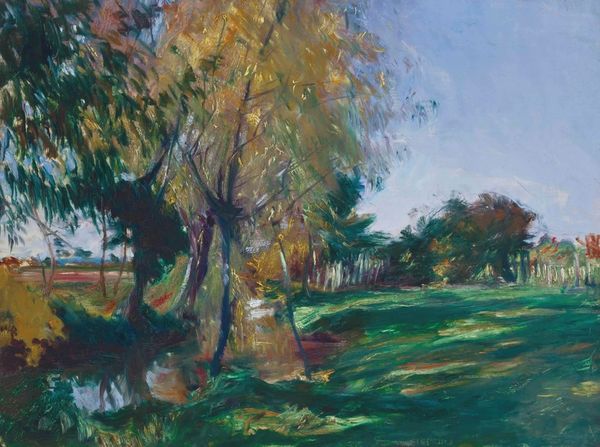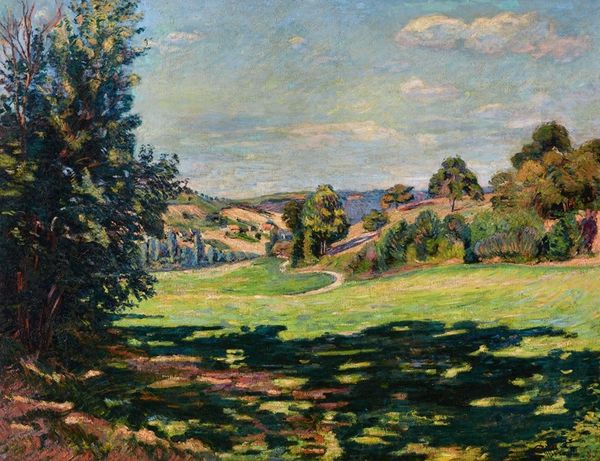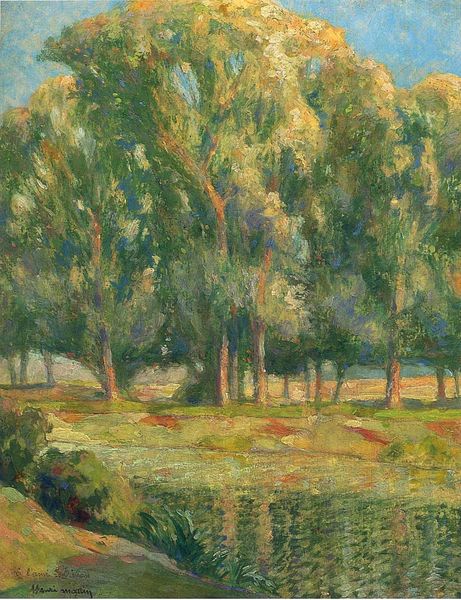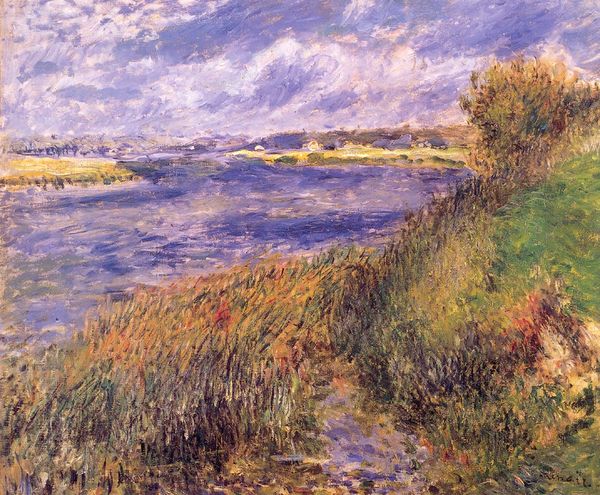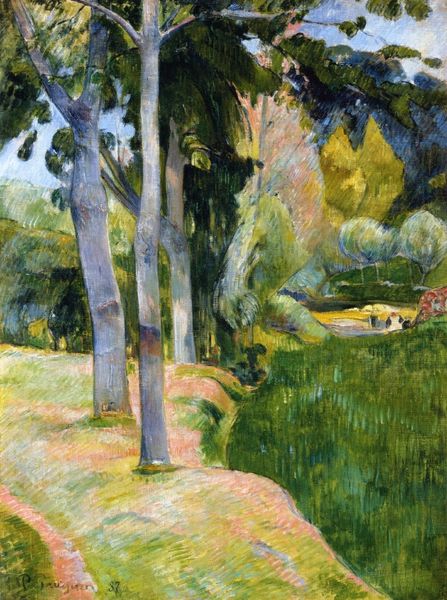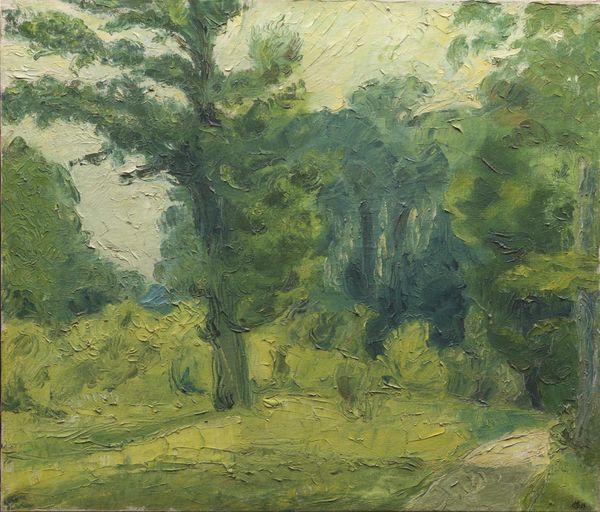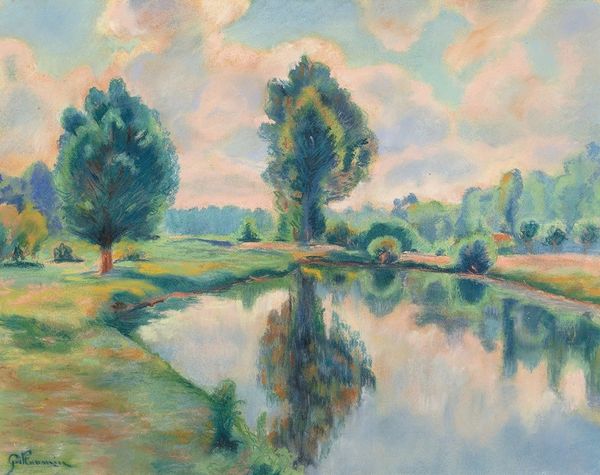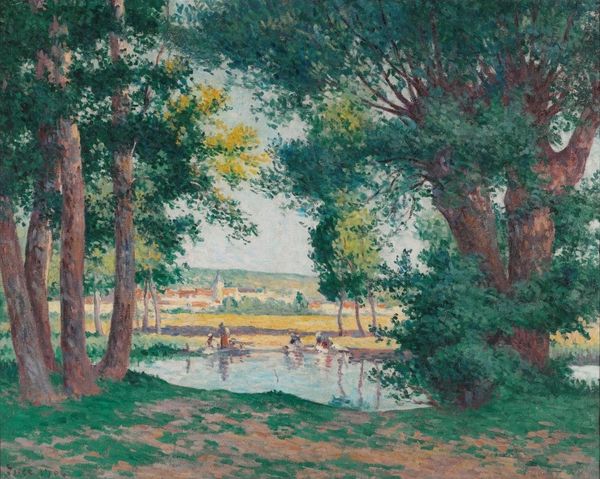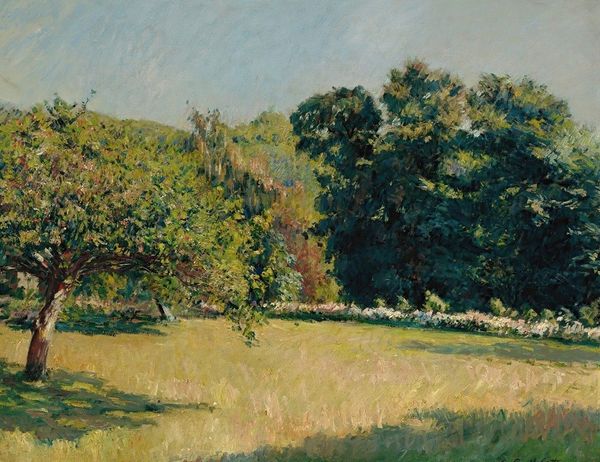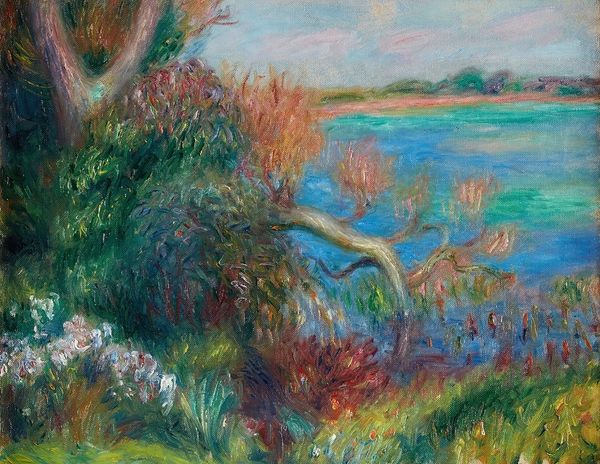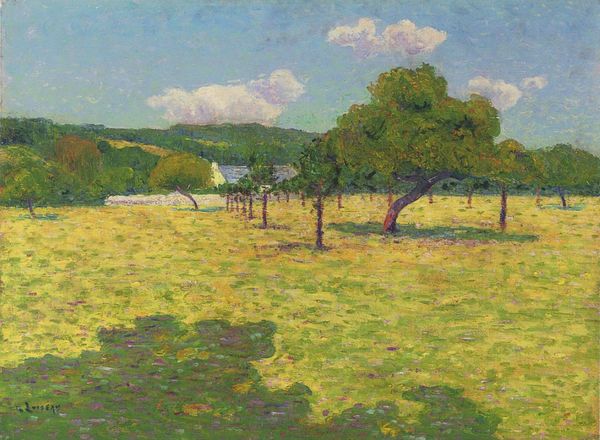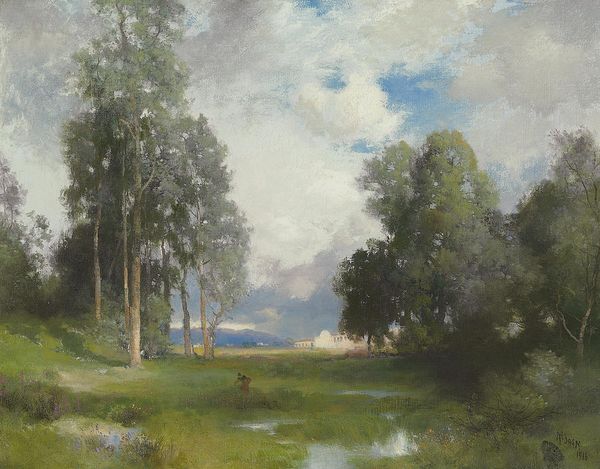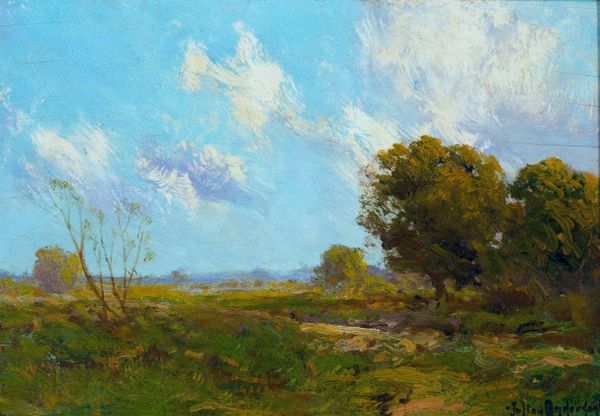
Copyright: Public Domain: Artvee
Curator: Standing before us is "Meadows," a pastel work created circa 1891 by Childe Hassam. What strikes you most immediately? Editor: The overwhelming sense of light. It's so diffused, almost hazy, but it really makes the greens of the meadow vibrant. You can almost feel the humidity. Curator: Hassam was deeply immersed in the Impressionist movement. And with that in mind, his commitment to plein-air painting, painting outdoors, profoundly shaped his technique here. Notice how he captures the ephemeral qualities of light and atmosphere? These impressionists would often have gender constraints that put them out of galleries, where did Hassam exist during this period? Editor: True, it's a study in capturing a fleeting moment, and considering this is pastel on paper, that spontaneity makes sense. It doesn’t strike me as something deeply labored; it's about the immediacy of the visual experience. I'm wondering what the scale of this piece is? Curator: It’s relatively modest in size. Now, to consider its social context, Hassam often depicted scenes of urban life and the countryside, particularly the landscapes of New England. He reflects an idealized vision of the American pastoral. Is that idealization complicit or actively transformative for Hassam, here? Editor: It is a pastoral scene and there is evidence he does want the world to be better through his material but to the first point, maybe. However, it's still work made by a man. Look how that the strokes are rendered and laid down and what do they resemble, a field with people laboring and toiling, in contrast, no they reflect leisure, of nature just growing with no cultivation in need. Even in the marks and materials he has agency. Curator: Precisely, and one could further consider that his works contribute to an evolving construction of American identity through romanticized depictions of nature. Hassam really situated these environments with a certain optimism, reflective perhaps, of the era's expanding industrialization alongside these remaining green spaces. Editor: In its focus on observation and the manipulation of humble materials, that reflects the artistic concerns of the era. But it does have the appearance of being casually tossed off and as viewers, do we honor the landscape in viewing? Is this all a matter of commodity fetish? Curator: A vital point. That duality—the celebration of the natural world and how we interact with it within increasingly manufactured circumstances is ever-present in this work. Editor: Exactly, and those textures—so vital to his landscapes also underscore the way pastoral environments and subjects come to take on certain art historical resonances through their making. Curator: This interplay between visual experience and the construction of national identity gives "Meadows" a lingering complexity beyond its initial charming, yet idyllic portrayal of nature. Editor: Indeed. "Meadows," for all its initial lightness, carries a layered message concerning not just observation, but the social value assigned to scenes, sites, labor, and leisurely experiences.
Comments
No comments
Be the first to comment and join the conversation on the ultimate creative platform.
